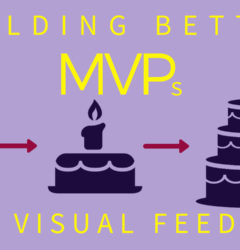Why do designers need project management tools
06 May

Table of Contents
ToggleAre you a designer? Are you always struggling to keep your inbox in control? Are you the one who has to spend more time clearing the clutter than actually designing?
The design is no longer done in isolation. Design these days is a team sport. Rather it always was, when it comes to designing experiences. It’s not only the designers who define the design sprint team. Designers, developers, business analysts, clients, SMEs interact and discuss to structure the design roadmap. Working together prevents pitfalls and leads to better planning. This, in turn, saves cost and time.
“Sprint teams need a good mix of personalities, skills, and disciplines.”
When people from different domains come together to achieve a common goal, collaboration gets critically essential. And keeping up with the flow of information can easily get overwhelming without the right project management tool in place.
Things to consider while choosing the Project Management System for design teams.
Teams comprise designers as well as non-designers (techies, hard-core business guys, marketing and sales representatives, etc.)
1. Design is not something static, it’s a process that needs to evolve and prosper with time.
2. Design assets and files can be huge.
3. Different stakeholders might need to get involved in different sprint stages.
4. For collaborating over mocks and designs contextual feedback and discussions are a must.
5. Creativity can’t wait. Thus, real-time updates and reporting are a must to ensure a smooth and timely flow of facts and figures.
Integration with day-to-day design team tools is a plus as it strengthens collaboration while being in a familiar space i.e. shallow learning curve and adoption time.
Reasons Why Designers Need Project Management
Collaboration and communication
“The way we talk about design to stakeholders is critical to the success of our projects. We must become better communicators of design to people who may not have the same depth of experience in design or technology that we do.”
As NASA rule#15 suggests: ‘More often than not, the seeds of success or failure are planted during the early planning and team-building stage’. Thus, to facilitate better communication proper channels need to be established right from the planning phase.
Communicating design well to the internal team as well as the external stakeholders opens channels for suggestions and enhancements based on real experiences. That gives the design the right direction. An easy way to share and discuss design is a boon for creative teams. And if the same channel can address all the stakeholders involved(internal or external)it’s an additional feather that make the collaboration process smoother.
Here is how a creative director — Ales Nesetril spends his time.
Now if a single project management tool can keep track of these scattered internal and external facing communication paths. It will surely save designers from the insane pressure to keep things manageable.
Bucketing and prioritizing Tasks
The phrase ‘First things first’ holds true in every scenario. All tasks the design team intends to accomplish are not identical in terms of criticality. The priority, severity and complexity of each task is different and needs to be handled accordingly. But the absence of a system that clearly buckets your tasks for different modules and priority can easily overwhelm you. This adds to the mess and pressure that already prevails catering to strict deadlines. One shot planning is obsolete and undesirable. So, tasks keep coming at their pace as the team decides for successive modules and gathers feedback for the previously designed modules. Having a system set to place these tasks in desired lists keeps thing in order and makes the workflow effortless.
Time Tracking
At the end of each design sprint the biggest concern is ‘where we spent all the time? Damn it was 5 days! Did we just did this only? Why couldn’t we beat the plan?’ — These thoughts will keep hounding you and your team unless you get organized. Just having a project management tool in place won’t do wonders. All the tasks and discussions need to be reflected in the system. Continuously updating the tasks as per the current status keeps everyone in sync. This in the long run helps you identify the silos where you need to work to improve your process.
Setting up a process and not improving it over time is sheer foolishness
A central reference to locate assets, thoughts, tasks and time and resources spent on the same is a great source to analyze and understand the trends.
Bonus – Time management strategies: How to be more efficient?
Final Thoughts
Based on your team structure and design process the requirements for the project management tools may vary. But the broader picture remains the same. To avoid being lost in collecting bits and pieces all the time you need a platform to collate and track your tasks, communicate with your team and clients and finally to peep into the performance and efficiency achieved.
zipBoard is a tool to manage projects and issues in your web design process with your entire team in one place. Be it a developer, designer, manager or external stakeholder, everyone can collaborate, exchange feedback and track tasks in zipBoard.
Manage projects better
Request a Demo To Know More About zipBoard's project management features
Get DemoRelated Post
Recent Posts
- How Laerdal Medical Cut eLearning Review Time by 50% with zipBoard’s Visual Review Tool July 9, 2025
- Why Your Team Needs a Content Feedback System (Not Just Comments in Docs) May 28, 2025
- Content Approvals Are Slowing You Down — Here’s the Fix May 26, 2025
- How to Streamline Content Review and Approval — Best Practices, Tools & Automation May 12, 2025
- What Is Content Operations? And Why It Breaks Without a Feedback & Approval System May 3, 2025
©️ Copyright 2023 zipBoard Tech. All rights reserved.


